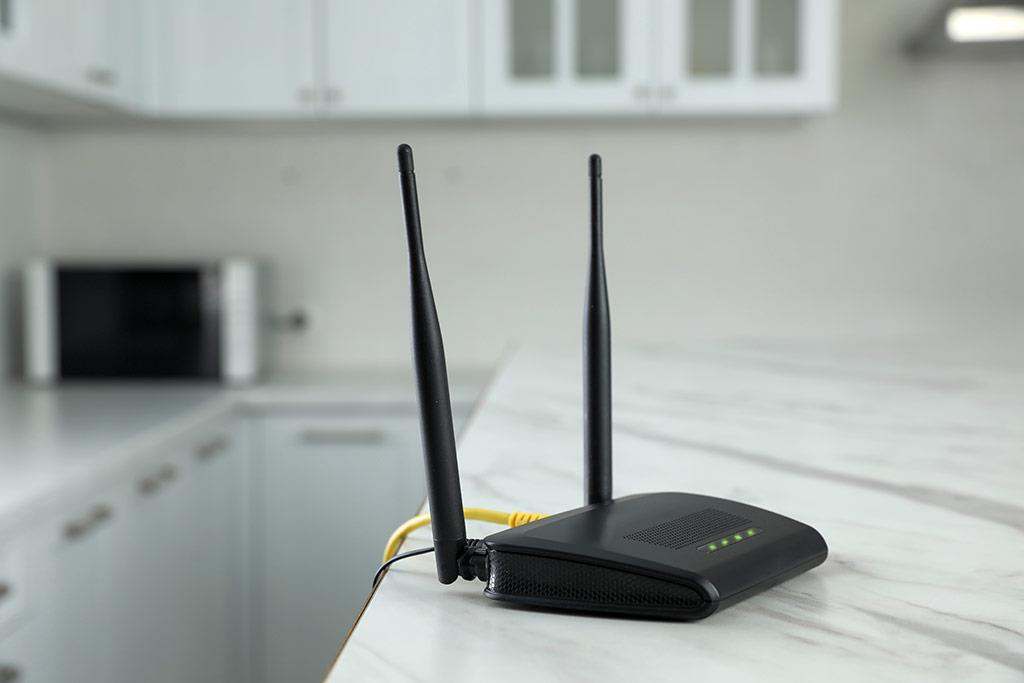
Router Placement and Hidden Kitchen Appliance Interference
If you’re struggling with frustrating Wi-Fi interference, your kitchen appliances may be the culprit. The standard 802.11 provides several radio frequency ranges in Wi-Fi communications, including, but not limited to, the two most common 2.4 GHz and 5 GHz. Unfortunately, hidden appliances throughout your home can also run on these frequencies, causing your Wi-Fi to run slowly and even experience disrupted signals.
Most Wi-Fi routers run on 2.4 GHz simply because this frequency is better at covering larger areas and has more success penetrating solid options, such as walls or furniture. Many router-related issues arise from electromagnetic radiation that interferes with Wi-Fi signals.
Kitchen Appliance Culprits
What kitchen appliances can affect your Wi-Fi router placement strength? Let’s delve into this topic a little deeper.
Microwave Ovens
Microwave ovens run on 2.4 GHz, which means that when you use your microwave, you may notice a temporary slowdown in your Wi-Fi.
Refrigerators
Wi-Fi signals often bounce off metal, and since your refrigerator takes up a significant portion of your kitchen’s wall space, you may experience Wi-Fi interference.
Dishwashers
Many new dishwasher models may feature Wi-Fi connectivity. If so, it’s important to remember that this is yet another connected device in your home.
Washers and Dryers
While this next appliance may or may not be in your kitchen, it’s still worth mentioning. The newest models of washers and dryers are more efficient and convenient than previous models. Wi-Fi connectivity lets you choose when to start your wash and dry cycles and create custom downloadable cycles.
Wi-Fi Outlets
If you have Wi-Fi outlets in your kitchen for appliances like coffee makers, these, too, may contribute to a slower Wi-Fi signal.
Other Wi-Fi Devices
You may have other Wi-Fi-enabled appliances in your kitchen, such as toaster ovens, blenders, lightbulbs, or even Alexa. It’s important to remember that all of these devices use bandwidth and can ultimately interfere with your Wi-Fi signal strength.
What to Know About Router Placement
While you may wonder if the only solution is disabling your Wi-Fi kitchen appliances, we have a more promising solution. Moving your router placement – even a few feet – can dramatically increase your connection speeds, helping you get the most out of your internet connection.
Home Telecom recommends the following for router placement:
- Place the router in a centralized location in the home to help distribute Wi-Fi coverage evenly.
- You can increase your Wi-Fi range by elevating the router, so opt for placement on top of a tall bookshelf.
- Place the router away from obstructions, such as walls, windows or metal.
- Avoid placing the router near other electronic devices, which can interfere with the Wi-Fi signal.
Home Telecom High-Speed Internet
If you’re experiencing router-related Wi-Fi issues, take our internet speed test. If your internet speed is satisfactory, you may want to consider how many items are connected in your home, such as thermostats, security cameras, garage doors, televisions, smartphones, laptops, computers, and gaming devices. Learn more about what speeds you need for your home based on your connectivity.
